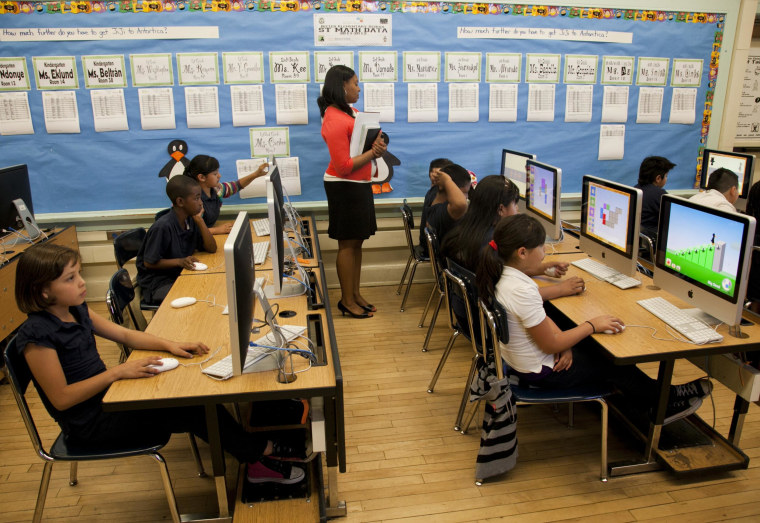The idea that a company is keeping tabs on a student's every computer click is a scary concept for parents. A recent article compared this monitoring to NSA spying and raised questions such as who gets access to the students' data and what will be its ultimate use. The fact that school systems are farming out their capacity to process data to for-profit companies is problematic and brings up issues which need to be addressed. Yet there are potentially revolutionary benefits to using student data to support learning, especially in predominantly Latino schools with few resources.
News analysis
For the better part of half a century, educators have struggled with how best to assess student learning and make curricular changes based on such assessments. In recent history, we’ve used testing (and more recently standardized testing) in order to figure out what we need to teach to which students.
This process is incredibly clunky and not very accurate. Take for example testing a fourth grade class on their knowledge of the civil rights movement. The fact that Phillip scored significantly below the class average tells us nothing about what we can do to actually help Phillip learn the material. Our best guess with this kind of assessment is to tell Phillip to “study harder next time.” Educators call such testing summative assessment because it’s a snapshot of the endpoint of a learning process.
Almost all educators agree a better way is to evaluate how students are learning, which is called formative assessment. This process "checks in” with students at regular intervals to ensure they are learning what the teacher thinks they should be learning. If they aren’t, the teacher can then intervene while they still have time to do something about it.
Unfortunately, this kind of assessment is incredibly resource-intensive, and it is rarely utilized in public schools. This can put Latino students at an added disadvantage because historically these youth are in school districts with little resources. Even when they are in schools with more resources, Hispanic student behaviors are sometimes misinterpreted as negative character traits like laziness or inattention. For instance, when a Latino student forgets a homework assignment, the teacher might be more likely to assume the student didn’t care about his or her work.
While it may not be a huge deal to parents with resources, ongoing data support can make a major difference to students from disadvantaged backgrounds.
Enter learning analytics, tools that use algorithms or formulas to analyze big data in order to understand how students are learning and how educators can intervene to help students. The data themselves don’t misinterpret students because of their ethnic backgrounds. If the same Latino student forgets a homework assignment, it is just added as an extra data point in the algorithm without placing any stereotype-based evaluation on why it happened.
Learning analytics is still in its "infancy." Yet some products are already providing automated support to students, such as emails suggesting where they might focus their time. While this may not be a huge deal to parents who have the resources to be involved in their student’s schooling, such “slight” interventions can make a major difference to students from disadvantaged backgrounds.
My research with students at a Latino-serving university shows we can use data about how students are reading their digital textbooks in order to identify which students are at risk of failing a course within the first few weeks of a semester. This kind of data might also help identify students who are struggling because of their reading skills. Such prediction allows educators to focus their already-limited resources on which students need the help as well as what times during the school term.
Learning analytics are especially beneficial when considering the changing demographics of the United States. Our youth are no longer homogenous: they don’t look the same, many speak a different language at home, and research shows that there is much more variety in the ways that they learn. Learning analytics allow educators to personalize learning in a way that best fits diverse groups of learners.
While these big data methods show great promise, we do need to be concerned about their implementation.
Many for-profit companies don’t understand how student data should be protected and know little about the Family Educational Rights and Privacy Act (FERPA) which protects student educational records. Parents can support regulatory efforts to ensure student data is being used appropriately and that data profiles don’t contain information that can be used to discriminate against students.
Furthermore, many companies fail to partner effectively with educators and provide little information to teachers about how to best intervene. They are missing the opportunity to have educators drive the development of their products. Parents should support and be involved in partnerships to help promote uses of data that are educationally meaningful.
Yet there is no reason to panic about using big data in education. Though there are certainly issues that parents need to be aware of, learning analytics can be a valuable new tool to support children's educational success.
